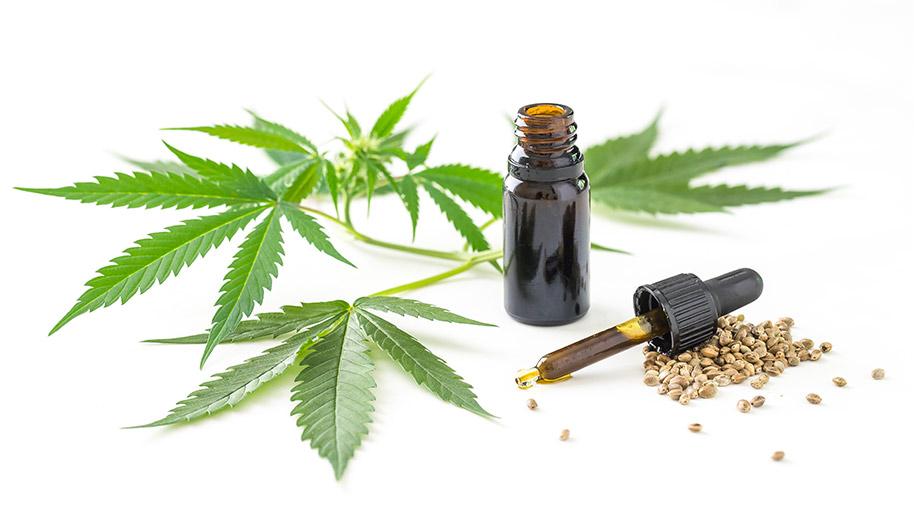The Evolving Landscape of Cannabis: A Duality of Healing and Controversy
In a world increasingly drawn to natural remedies and alternative therapies, the cannabis plant has emerged from the shadows of prohibition into the spotlight of modern medicine and recreation. Once a symbol of counterculture and rebellion, cannabis is now a multifaceted substance sparking debates that straddle the lines between science, ethics, and law. With a rich history spanning millennia, it has been revered for its therapeutic properties while simultaneously facing stigma and legal challenges. As researchers delve deeper into its potential benefits, and as societal attitudes shift, the narrative around cannabis is redefining itself. This article aims to explore the duality of cannabis as both a drug and a healing agent, examining its complex history, current applications, and the future that lies ahead in the realm of medicinal and recreational use.
Table of Contents
- The Evolving World of Cannabis: Understanding its Therapeutic Potential
- Exploring the Varieties: Choosing the Right Strain for Your Needs
- Navigating Legal Landscapes: Ensuring Compliance and Safety
- Integrating Cannabis into Wellness Routines: Practical Tips and Considerations
- Q&A
- Key Takeaways
The Evolving World of Cannabis: Understanding its Therapeutic Potential
The landscape of cannabis research has dramatically shifted over recent years, revealing a wealth of therapeutic applications that were previously overlooked. Increasingly, studies highlight the potential of cannabinoids—compounds found in the cannabis plant—for addressing a variety of health issues. The diverse effects of cannabidiol (CBD) and tetrahydrocannabinol (THC) suggest that they may play a significant role in pain management, anxiety relief, and even neuroprotection. This evolving understanding emphasizes the importance of recognizing individual responses to cannabis treatment, as factors such as genetics, the method of consumption, and the specific cannabinoid profile can profoundly influence outcomes.
As the conversation around cannabis continues to develop, an array of delivery methods are emerging, each with distinct advantages. Patients now have the option to choose from:
- Oils and tinctures – Ideal for precise dosing and fast absorption.
- Edibles – Offering discreet use with long-lasting effects.
- Vapes - Providing quick relief with customizable experiences.
- Topicals – Focused on localized treatment for pain and inflammation.
Understanding these avenues enhances access to cannabis-based therapies and supports informed choices about treatment plans. The desire for safe and alternative therapeutic options continues to drive public interest and research funding, paving the way for innovative cannabis drug formulations that prioritize efficacy and safety.
Exploring the Varieties: Choosing the Right Strain for Your Needs
Choosing the right cannabis strain can be a transformative experience, whether you’re seeking relief from chronic pain, a boost in creativity, or simply relaxing after a long day. Each strain comes with its own unique profile of cannabinoids and terpenes, contributing to distinct effects. When selecting a strain, consider your desired outcome and any underlying health conditions. Popular categories include:
- Indica: Often associated with relaxing effects and pain relief.
- Sativa: Typically linked with uplifting, energizing experiences, perfect for social settings.
- Hybrid: A balanced mix of both, tailored to individual preferences.
To further assist you in making a choice, it’s essential to understand the profile of particular strains. Below is a quick reference table that outlines a few notable strains and their general effects:
| Strain | Type | Effects |
|---|---|---|
| Blue Dream | Sativa-Dominant Hybrid | Balanced euphoria and relaxation |
| Granddaddy Purple | Indica | Deep relaxation and sleep aid |
| Sour Diesel | Sativa | Energetic and creative boost |
Understanding these differences and matching them to your needs will help you navigate the extensive world of cannabis with greater confidence. Keep in mind that personal experiences may vary, and it’s essential to start with lower doses if you are new to cannabis or trying a new strain for the first time.
Navigating Legal Landscapes: Ensuring Compliance and Safety
As the cannabis industry evolves, navigating its multifaceted legal environment becomes increasingly crucial for businesses and consumers alike. Compliance with local, state, and federal regulations is not merely a suggestion but a necessity for cultivating a sustainable operation. Organizations must stay informed about licensing requirements, product testing regulations, and sales restrictions to avoid penalties and ensure that they are operating within the bounds of the law. Key considerations include:
- Licensing: Obtaining the necessary permits and licenses for cultivation, distribution, and retail.
- Quality Control: Implementing rigorous testing protocols to meet safety standards and regulations.
- Labeling Requirements: Ensuring all product information is accurate, including dosage, ingredients, and health warnings.
Beyond regulatory compliance, ensuring safety for consumers involves a commitment to transparency and education. Companies must prioritize responsible marketing practices and actively inform consumers about the effects and potential risks associated with cannabis use. Therefore, creating clear channels for communication and feedback can foster trust within the community. Utilizing customer service platforms to address inquiries and concerns directly is also essential. Consider establishing a dedicated FAQ section on your website that highlights:
| Question | Answer |
|---|---|
| Is cannabis legal in my state? | Check state-specific regulations to find accurate information. |
| What are the health effects of cannabis? | Consult health professionals for expert guidance. |
| How can I find safe products? | Look for products from licensed, reputable retailers. |
Integrating Cannabis into Wellness Routines: Practical Tips and Considerations
The growing acceptance of cannabis as a wellness tool invites individuals to explore its potential benefits thoughtfully. Start by understanding your personal wellness goals; whether it’s managing stress, improving sleep quality, or enhancing focus, aligning cannabis use with specific intentions can optimize your experience. Consider experimenting with different consumption methods—such as tinctures, edibles, or vape pens—to discover what suits you best. Make sure to note the dosage and effects in a journal to refine your routine over time.
When incorporating cannabis into your wellness regimen, it’s essential to pay attention to quality and strain selection. Certain strains can promote relaxation, while others may invigorate your senses. To guide your selection process, refer to the table below that highlights popular strains and their primary effects:
| Strain | Primary Effect |
|---|---|
| Indica | Relaxation, Stress Relief |
| Sativa | Focus, Energy Boost |
| Hybrid | Balanced Effects |
Moreover, prioritize sourcing cannabis products from reputable suppliers to ensure safety and efficacy. As you integrate this practice, mindfulness becomes key; try to incorporate cannabis during moments of reflection or relaxation, such as yoga or meditation. Staying attuned to how it affects your mind and body will not only enhance your wellness routine but also empower you to make informed choices about your health journey.
Q&A
Q&A on Cannabis as a Medicine
Q: What is cannabis, and how is it used as a drug?
A: Cannabis, often referred to as marijuana, consists of the dried flowers, leaves, stems, and seeds of the Cannabis sativa plant. It contains various compounds known as cannabinoids, the most recognized being THC (tetrahydrocannabinol) and CBD (cannabidiol). While THC is primarily responsible for the psychoactive effects that users experience, CBD is lauded for its potential therapeutic benefits without the euphoric high. Cannabis can be consumed in multiple forms including smoking, vaping, oils, edibles, and topical applications.
Q: What medical conditions can cannabis help treat?
A: Research and anecdotal evidence suggest that cannabis may be effective in alleviating a range of medical conditions. These include chronic pain, anxiety disorders, epilepsy, nausea from chemotherapy, multiple sclerosis, and conditions related to appetite loss, such as in HIV/AIDS patients. However, effectiveness can vary significantly among individuals.
Q: Is cannabis safe for everyone?
A: While many people benefit from cannabis, it is not universally safe. Individuals with certain health conditions, such as those with a personal or family history of psychosis or severe mental health disorders, may experience adverse effects. Additionally, cannabis can interact with other medications. Therefore, it’s crucial for anyone considering cannabis therapy to consult with a healthcare professional beforehand.
Q: How does the legality of cannabis affect its use as a drug?
A: The legality of cannabis varies widely across countries and states. In some regions, it is fully legal for both medical and recreational use, while in others, it remains strictly prohibited. This patchwork of regulations affects research, availability of cannabis products, and the medical community’s ability to prescribe it. As societal attitudes evolve and more research is conducted, we can expect ongoing changes to these laws.
Q: What are the potential side effects of using cannabis?
A: Just like any other medicine, cannabis can have side effects. Commonly reported ones include dry mouth, dizziness, increased heart rate, and impaired memory. Some users may experience heightened anxiety or paranoia, especially with high-THC strains. Long-term use can also lead to dependence or substance use disorder in some individuals. Being informed about these potential risks is essential for anyone considering cannabis.
Q: How is cannabis research evolving?
A: Cannabis research is rapidly advancing, fueled by changing public perceptions and increased legalization. Studies are exploring its effects on a broader spectrum of conditions and the potential mechanisms behind its therapeutic properties. Institutions are also investigating optimal dosages, delivery methods, and long-term effects. As more data emerges, we may uncover deeper insights into how cannabis can be effectively integrated into medical treatment plans.
Q: What should someone consider before starting cannabis treatment?
A: Anyone interested in utilizing cannabis as a treatment should conduct thorough research, consider their specific health needs, and consult with a qualified healthcare provider. It’s crucial to understand local laws regarding cannabis use, as well as to evaluate various strains and products for their unique cannabinoid profiles. A personalized approach can help identify the best treatment plan with the most promising outcomes.
In exploring the complexities of cannabis as a drug, it’s vital to balance curiosity with caution. As our understanding expands, the dialogue surrounding cannabis continues to evolve, inviting both enthusiasts and skeptics to engage in a nuanced conversation about its potential in medicine.
Key Takeaways
As we draw the curtain on our exploration of cannabis in the realm of medicine, it becomes evident that this multifaceted plant exists at the intersection of tradition and innovation. From its historical use in various cultures to its contemporary applications in pain management, anxiety reduction, and beyond, cannabis continues to challenge perceptions while inviting deeper inquiry into its potential benefits and risks.
As research progresses and regulations evolve, the dialogue surrounding cannabis offers a glimpse into the future of medicine—a future where natural remedies may play a pivotal role alongside conventional treatments. Whether you are a patient, a healthcare professional, or simply a curious observer, the journey into the world of cannabis is one that promises ongoing discovery and conversation.
In this ever-changing landscape, knowledge remains our most valuable tool. Staying informed and critically engaged will ensure we navigate the complexities of cannabis thoughtfully and responsibly, as we strive for a balanced understanding of its place in healthcare and society at large. So let us continue to question, learn, and open our minds to the potential that lies within this remarkable plant.



